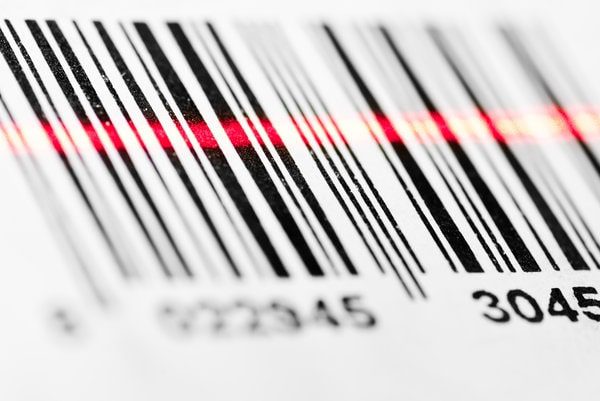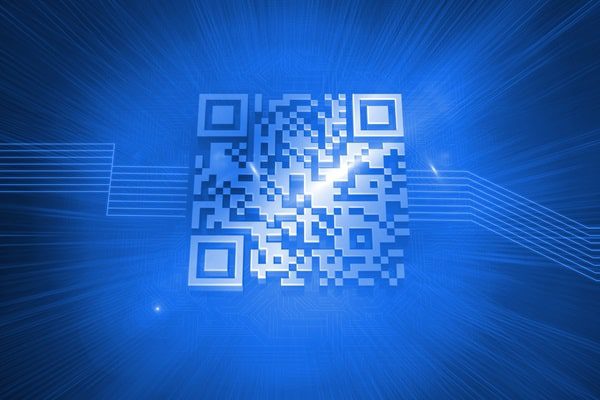Fixed Asset Market Manager
Barcode labels come in a number of different styles with many possible unique designs. With over 30 major barcode categories out there, it’s important to understand the differences between them and exactly how much data can be stored on an individual label. To help you get the basics right, in this post we’ll review the three major barcode types and the differences in density and character length.
This information can help you select an optimal barcode symbology for your labels and tags. Most barcode labels will support many of these common formats, giving you the complete flexibility to match your label design with compatible scanning hardware and a centralized asset management system.
Numeric-Only Barcode Data

Numeric-only barcodes use the characters 0-9 and occasionally support select special characters. The barcodes use a simple series of vertical lines of varying length to represent the data. Following are a few of the most popular numeric barcode symbologies, sorted by the number of characters that can be displayed on a single barcode.
- International Standard Serial Number (ISSN): 8 characters. This style of a numeric barcode is used throughout the world to mark journals, magazines, and newspapers. The format is eight digits in length that are divided into two four-digit numbers with the final digit being assigned as the checksum.
- Two-Out-of-Five (2 of 5): 2-30 characters. This barcode style has many variations, including Standard 2 of 5, Industrial 2 of 5, and Interleaved 2 of 5. The primary characteristic of 2 of 5 barcodes is that two out of five bars (spaces) are wide, while the remaining three bars are thin.
- POSTNET: 5-11 characters. The POSTNET barcode format was popularized by the U.S. Postal Service and is a variation of the 2 of 5 design. These barcodes use two tall bars to represent “1” and three short bars to represent “0.” They are used to track zip codes, with multiple formats that can support a different total number of characters.
- Universal Product Code (UPC). 6-12 characters. The standard version of a UPC code is referred to as UPC-A and supports 12 total digits that can include the numbers 0-9. The first digit is used as a starting identifier and the last digit is a checksum. A smaller version, UPC-E, can display six characters and is used to mark smaller packages and items.
- European Article Number (EAN). 8-13 characters. Used throughout Europe, the most common version of this barcode style is EAN-13 which supports 13 total digits including one digit for a country code, and the final digit is a checksum. Similar to UPC codes, the format EAN-8 is available for smaller items and supports eight total characters.
- Japanese Article Numbering (JAN). 13 characters. Unique to Japan, this barcode symbology supports 13 digits, with the first two digits referring to a numbering system or country code and the last digit representing the checksum.
- International Standard Book Number (ISBN). 13 characters. These codes are used to mark books published throughout the world and the format supports 13 digits with the sequence typically beginning with the number 978.
- Codabar (USD-4). 16 characters. Originally developed by Pitney Bowes, this barcode includes 16 total characters with four reserved as start/stop identifiers. A unique feature of Codabar barcodes is support for 12 unique symbols including 0-9, dash, and the dollar sign.
- Code 11 (USD-8). Unlimited characters. The name of this barcode comes from the 11 characters that are supported, which include the numbers 0-9 and a dash character. A star symbol is sometimes used as a stop character, and barcodes can be created with a variable length.
Alpha-Numeric Barcode Data
Alpha-numeric barcodes are similar in design to numeric barcodes but can also support letters and occasionally special characters, as well. Many of these alpha-numeric barcode styles are also variable in length and can include a large number of total characters. Common alpha-numeric barcode symbologies are listed below in order by the approximate data density they contain.
- Code 39: Moderate density. This alpha-numeric barcode style supports 43 unique characters, including A-Z, 0-9, and some special characters. Code 39 barcodes do not include a check digit, which can make scanning faster. Code 39 barcodes can be of variable length.
- LOGMARS: Moderate density. Standing for Logistics Applications of Automated Marking and Reading Symbols, the LOGMARS barcode symbology is used by the U.S. Department of Defense (DoD) for tracking purposes as defined in MIL-STD-129N. This format is similar to Code 39.
- Plessy. Moderate density. The Plessy barcode is similar to a 2 of 5 design but has a greater density that encodes each hexadecimal digit as four bars. A unique feature of these barcodes is that they can be read in either direction.
- Code 93: High density. This barcode style supports 48 unique characters, including start and stop identifiers. Characters can also be combined to represent all 128 ASCII characters, but this reduces the density slightly as compared to the Code 128 design.
- Code 128: High density. This is a very compact and high-density design that supports all 128 ASCII characters.
Two-Dimensional Barcode Data

Two-dimensional, or matrix, barcodes use a series of squares to represent the individual characters and include a series of orientation boxes to help align the scanner. These barcodes are extremely high density and can support up to 7,089 characters on a single label.
- PDF417: Up to 2,710 characters. The PDF417 barcode pattern uses four bars and spaces in a pattern that is 17 units long and can contain from three to 90 rows. Multiple character types are supported, with varying data capacities based on the type of information stored: numeric (2,170 characters), alpha-numeric (1,850 characters), and binary (1,108 characters).
- Data Matrix: Up to 3,116 characters. This 2D barcode style is similar to PDF417 with an alternate design for representing the 2D bars. The data capacity of a data matrix barcode will vary depending upon the type of data that is stored: numeric (3,116), alpha-numeric (2,335), and binary (1,556)
- Quick Response (QR): Up to 7,089 characters. This is a common 2D barcode format that is found in many publications and is frequently used to access apps and internet resources with a simple scan. As with the 2D formats above, the data capacity depends on the characters used: numeric (7,089), alpha-numeric (4,296), and binary (2,953).
Barcode technology has evolved at a steady pace over the years, and data density continues to increase with the most recent 2D symbology designs. You are likely to find an option that can display just the right amount of data for each application. By customizing your barcode labels, you can optimize your scanning efficiency and create a robust system for tracking your important assets.



